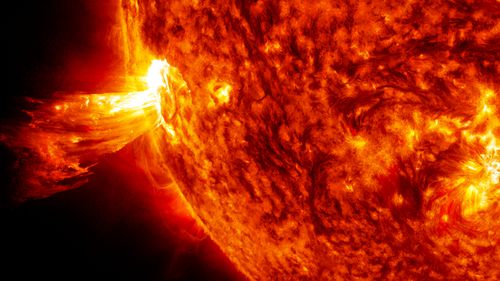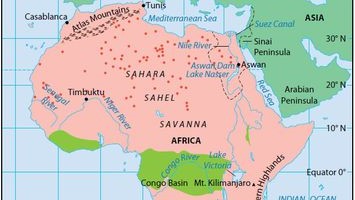Did you know that there are storms always occurring in space? Not rain or snow, but winds and magnetic waves that move through space! This is known as space weather. Sometimes their impacts can reach Earth or Earth’s upper atmosphere. Space weather can impact us in different ways than commonly known weather within our atmosphere (rain, snow, heat, wind, etc.). Radio blackouts, solar radiation storms, and geomagnetic storms can all be caused by disturbances from the sun.
The National Oceanic and Atmospheric Administration’s Space Weather Prediction Center (SWPC) is the official source for space weather forecasts for the United States. It forecasts solar storms, similar to how the National Weather Service offices in the U.S. forecast weather here on Earth. SWPC forecasters use instruments on Earth and satellites in space to monitor the active regions of the sun for any changes. They use this information to issue warnings, watches, and alerts for dangerous space weather events. Just like there are categories used to classify hurricanes, there are also Space Weather Scales for communicating the intensity of solar storms. To predict these storms, forecasters watch the sun for solar flares and coronal mass ejections.
Solar flares are massive explosions on the sun’s surface. They often occur near sunspots and release a wide spectrum of photons. Photons are bundles of electromagnetic energy that make up all light. Solar flares release photons like x-rays, visible light, and ultra-violet light, as well as highly energized protons, into space.
The biggest solar storms are caused by coronal mass ejections (CME). A CME is an enormous bubble of plasma pushed out from the sun’s surface. It contains billions of tons of fast-moving solar particles as well as the magnetic field that binds them. The speed of a CME can even exceed 5 million miles per hour!
Earth’s magnetic field helps to protect us from the effects of some solar storms, but space weather can still impact the earth. Strong solar storms can cause fluctuations of electrical currents in space. This can add more energy to electrons and protons in Earth’s magnetic field. These disturbances can cause problems with radio communications, Global Positioning Systems (GPS), power grids, and satellites. Imagine all the ways that we depend on satellites. They power cell phones, weather prediction, TV, search and rescue, navigation, space travel, military surveillance, credit card and ATM transactions, and more. What if those satellites were damaged? As technology becomes more important to our daily lives, the need for space weather monitoring and forecasting becomes more important.
They say every storm cloud has a silver lining. In the case of space weather, that lining is the aurora, commonly known as the northern or southern lights. When electrons and protons around Earth are energized by solar disturbances, they can follow Earth’s magnetic field toward the north and south magnetic poles. There, they collide with atmospheric molecules. This energizes them and causes them to glow. The colors that come from these collisions depend on the types of nearby atmospheric gases. Often, they are a brilliant yellow-green color.









